NVMH
Nederlandse vereniging van munthandelaren. (Dutch association of coin traders.)
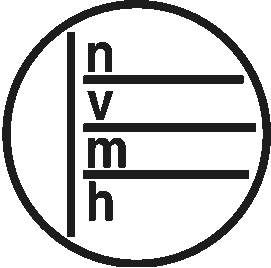
The NVMH was founded in 1982 to effectively protect the interests of the coin trade and collectors. All members of the NVMH subscribe to the association's code of honor:
- An NVMH member will never sell, have sold, produced or have them produced: forgeries, copies and unofficial references unless clearly recognizable or indicated as such.
- An NVMH member will never buy or sell numismatic objects of which he doubts or should doubt the legality of the acquisition.
- Objects about which the buyer has valid complaints must be taken back, provided the complaint is made known within a reasonable period of time.
- An NVMH member will provide objective and honest information to the best of his ability.
- An NVMH member will have to qualify his numismatic objects according to current standards.
Quality of coins
A Dutch coin dealer once organized a competition asking what the difference would be between ZF + and P-. The winning answer was “That's +/- the same”. *
This answer gets to the heart of the problem that experienced collectors, and certainly novice collectors, often face. All of this wouldn't be such a problem were it not for the price difference between ZF + and P-. It is therefore useful to discuss the quality determination in more detail. Usually, the quality assessment is based on the degree of wear and tear of the coin. The fact that stamps also wear out in use is usually forgotten and this means without a doubt that one FDC coin is not the other. An FDC coin minted with a new stamp on a beautiful planchet is of course more attractive than an FDC coin struck with a worn stamp with stamp fractures on an adjusted blank (see adjustment). ** The problem of stamp wear and quality of the planchets applies in increased degree for the so-called proof quality.
For example, with the proofsets of the coins from 1982 onwards, great care is taken with regard to the choice of the high-gloss planchets, the pressure during the strike and the care of the stamps. On average, no more than 200 coins are struck with a stamp. The high quality standard of the current proof coins certainly does not apply to the coins that were struck with polished stamps in the past. In short: one proof coin is not the other. On the basis of photos, an attempt is made to indicate what is meant on this site by the various quality grades.
PP (Polished stamp / Proof / Polierte Platte / Flan bruni)
Proof coins are struck on polished planets with polished stamps. The higher parts on the coin are recessed in the stamp. When polishing the stamp, the deeper parts are not touched, so they remain rough and ensure that on the coin the higher parts are matte after striking, while the field is shiny as a result of the polishing of the mint plate and stamp . Only a limited number of coins are minted with a stamp. Proof coins are extremely fragile, the mirror surface is very easily damaged and everything is visible on these coins. Even the softest cloth can give very fine sanding scratches. These coins should only be handled by the edge, because fingerprints are almost impossible to remove without damaging the coin. PP is not quality, but a production method. A coin with polished stamps does not necessarily have to be FDC.
PL (Prooflike)
With prooflike coins, only the planchets are polished and the stamps are handled with extra care. More coins are minted per stamp than with proof coins. Sometimes it is difficult to distinguish between a prooflike coin and the first turn of a new stamp on an accidentally beautiful faceplate. Prooflike coins are also very delicate, the mirrored surface is easily damaged.
FDC (Fleur de coin = bloem van de stempel) / Stempelglanz
A coin has the quality FDC at the moment it comes out of the press and before it falls into the collecting bucket. The coins are undamaged and do not show any signs of wear or other defects. According to the above definition, FDC coins are rare; however, coins can still be completely undamaged after the strike during transport, etc., so that they can still be called FDC. The smaller coins in particular suffer little from falling and transport. With FDC coins we have to distinguish between gloss and color. The so-called FDC gloss is a matt egg gloss that reflects light in a typical way. The FDC shine disappears with use. If the coin is stored carefully, the FDC luster will remain, while the color can change due to environmental influences. This creates a so-called patina. This patina is highly valued by some collectors. Other collectors prefer the original mint color.
BU (Brilliant Uncirculated)
With BU coins, use is made of better quality roundels (coin plates) and the stamps are specially processed. A light frosting is applied to the engraving to make the design stand out better. A BU coin is a normal circulation coin that has never entered circulation, so that traces of the production process may be visible, but damage due to intensive use does not occur.
UNC / Ongecirculeerd / Uncirculated / Unzirkuliert
When a coin leaves the press, it is FDC. Then it falls into a bucket and usually immediately becomes UNC. By falling and during further transport, the coins rub against each other, causing light superficial damage (English: bagmarks); otherwise, the same description applies to a UNC coin as to FDC. Especially with larger coins, it can happen that drops and the like form nicks and pits. If this type of damage is minor, the coin falls into the UNC category.
PR / Prachtig / Extremely fine / Vorzüglich / Superbe
If the coin has only been in circulation for a short time and if the coin shows hardly any visible signs of wear and tear, we call the coin beautiful.
ZF / Zeer fraai / Very fine / Sehr schön / Très beau
The coin has been in circulation for longer and shows wear on the higher parts. The original FDC shine has disappeared. All details are still clearly visible, but not sharp.
F / Fraai / Fine / Schön / Beau
The coin has been in circulation for a long time and therefore shows multiple and larger wear spots. The finer details are hardly visible anymore.
ZG / Zeer Goed / Very good / Sehr gut erhalten / Très bien conservé
The coin has been in circulation for a very long time and has been heavily worn, especially at the higher parts such as the hair and the lion. Parts of the text may be difficult to read.
G / Goed / Good / Gut erhalten / Bien conservé
The coin has been in circulation for a longer period of time and is therefore very worn down. Year and currency can often still be found.
* Met een + of een - wordt aangegeven dat een munt iets beter dan wel iets slechter is dan de genoemde kwaliteit.
Met F/ZF wordt aangegeven dat de kwaliteit van de totale munt tussen F en ZF in ligt.
** Adjust
Silver and gold coin plates were manually adjusted to the correct weight until 1900. Slots that were too light were returned to the crucible, slides that were too heavy were brought to the correct weight with the aid of a file. The file marks were sometimes still visible after the coin was struck.
2½ Gulden of Willem III
FDC
This quality shows no wear. Note the sharp beard and sharp hair. The eyebrow is clearly visible.
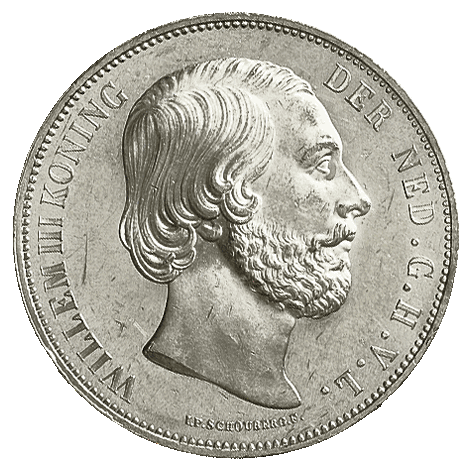
P
The coin shows hardly any signs of wear.
Notice the hair and beard. The eyebrow is also clearly visible.
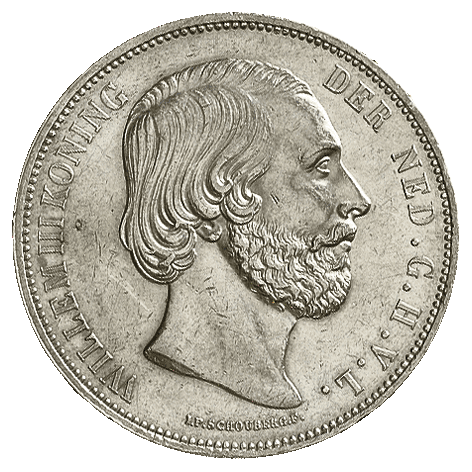
ZF
The higher parts show wear. The hair immediately below the part shows obvious wear, the tips of the hairs of the beard are no longer sharp.
The eyebrow is no longer visible.
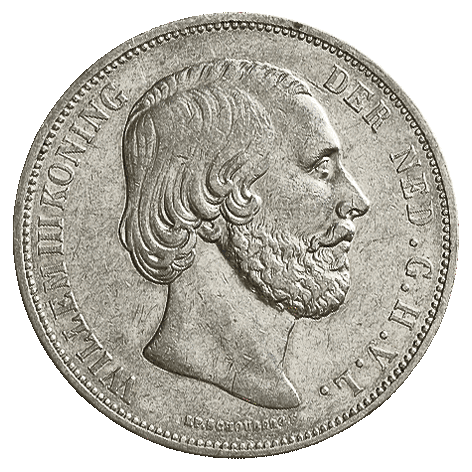
F
The hair is more worn down, the beard is noticeably starting to smooth. The eyebrow is no longer visible.
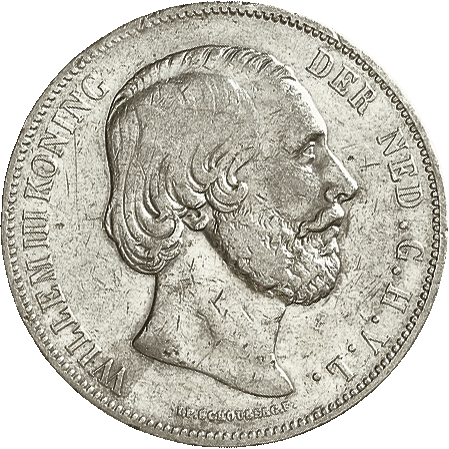
2½ cent
FDC
This quality shows no wear. Note the lion's sharp mane. The “fingers” of the claw holding the arrow bundle are clearly visible.
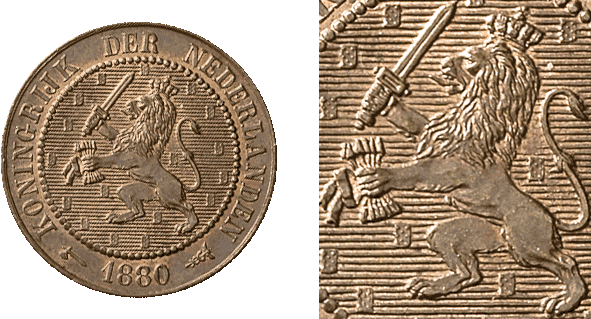
P
The coin shows hardly any wear. Watch the mane. The “fingers” of the claw are still clearly visible.
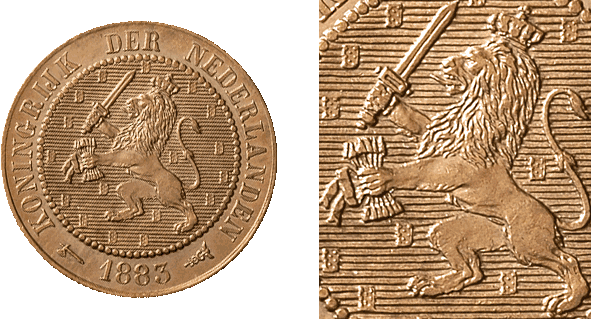
ZF
The higher parts show wear. Note the wear on the mane on the head and shoulders. The “fingers” of the claw are no longer distinguishable.
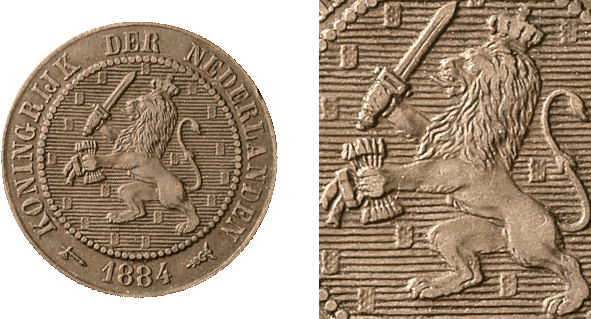
F
The wear on the mane is greater. The gaps in the crown begin to disappear. The “fingers” of the claw can no longer be distinguished.
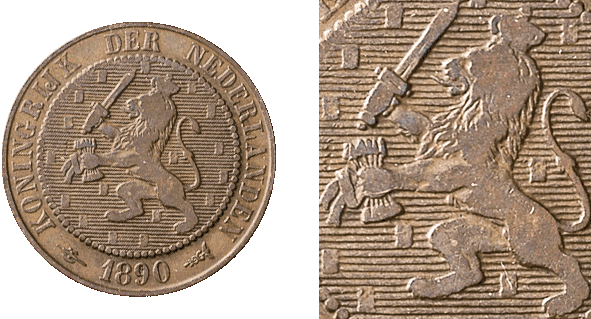
ZG
The mane has disappeared. The gaps in the crown are gone. The pearls of the inner circle close. The points on the blocks in the field are no longer visible.
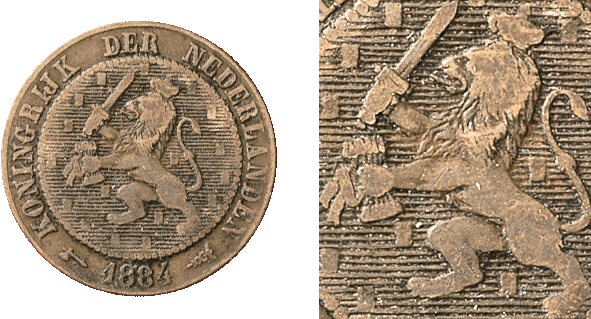
Images of items
On this site we work with model images of our articles such as stamps, coins, coincards and banknotes. We offer certain articles in several qualities. The item actually delivered may differ from the image shown, depending on the quality you have chosen.
We will show the actual item for more rare and expensive items. We make this known by adding 'current image'.

